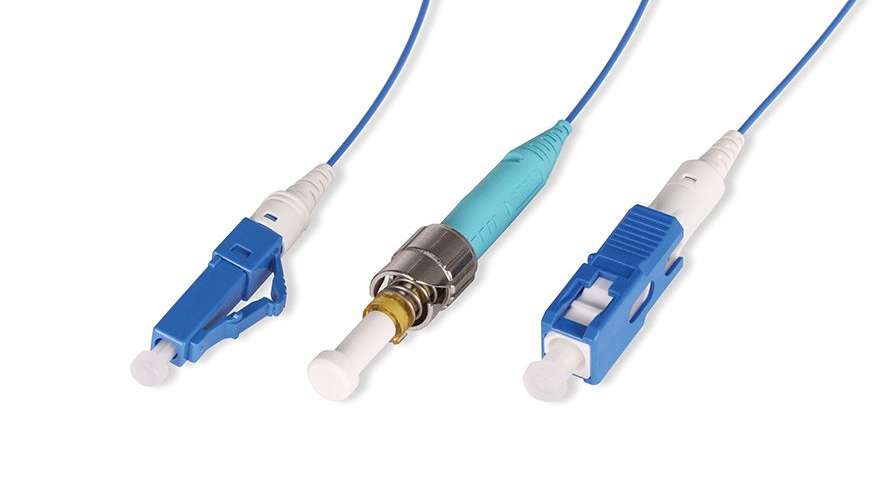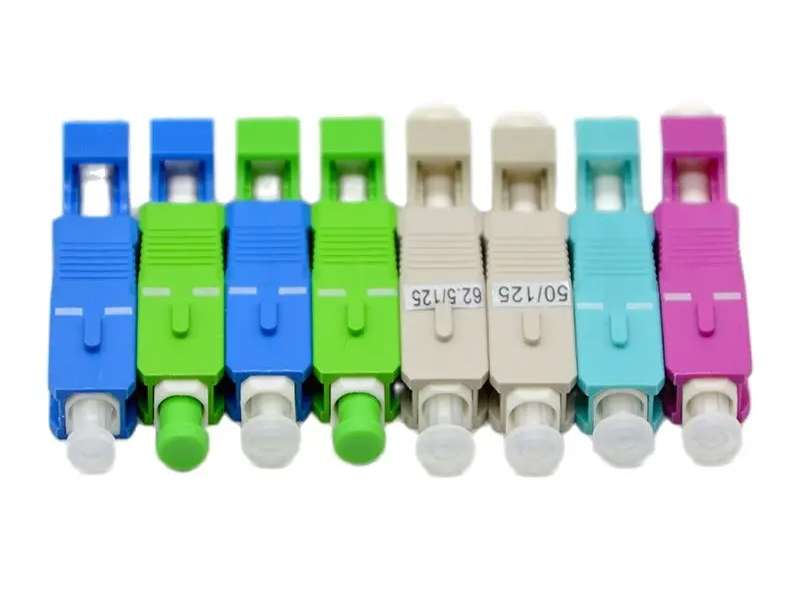The Role of SC vs. LC Connectors in Fiber Optic Technology
Fiber Optic Connector
Fiber optic connectors play a crucial role in facilitating high-speed data transmission within fiber optic networks. These connectors are essential components that enable the seamless connection of optical fibers, ensuring efficient and reliable communication. By securely aligning and joining optical fibers, fiber optic connectors help maintain the integrity of the signal, allowing for the swift and accurate transmission of data across vast distances.
Importance of Connectivity: Fiber optic connectors ensure the seamless connection of optical fibers, maintaining the integrity of high-speed data transmission.
Fiber Optic Technology
Importance of Fiber Optic Technology
Fiber optic technology plays a pivotal role in modern communication systems, revolutionizing the way data is transmitted across various networks. Its importance lies in its ability to transmit data at incredibly high speeds over long distances with minimal signal loss. This makes fiber optic technology indispensable for telecommunications, internet connectivity, and other data-intensive applications. Additionally, its immunity to electromagnetic interference ensures reliable and secure data transmission, making it a preferred choice for critical communication infrastructure.
Advantages of Fiber Optic Technology
The advantages of using fiber optic technology for high-speed data transmission are multifaceted. Firstly, it offers significantly higher bandwidth compared to traditional copper cables, allowing for the seamless transfer of large volumes of data. Furthermore, fiber optic technology is known for its low latency, enabling real-time communication and swift data transfer. Additionally, it is lightweight and immune to environmental factors such as moisture and temperature fluctuations, making it highly durable and reliable in diverse operational conditions.
SC and LC Connectors
When it comes to fiber optic technology, the connectors used play a pivotal role in ensuring seamless and efficient data transmission. Two commonly used types of connectors are SC (Subscriber Connector) and LC (Lucent Connector). Each type has its own unique characteristics and advantages that make them suitable for specific applications within fiber optic communication networks.
Characteristics of SC Connectors
High Performance: SC connectors are known for their high performance in terms of low insertion loss and high return loss, making them ideal for single-mode fiber applications where precision is crucial.
Push-Pull Design: They feature a push-pull coupling mechanism, which allows for easy insertion and removal, minimizing the risk of damaging the fibers during installation or maintenance.
Commonly Used: SC connectors are widely used in various applications such as telecommunication networks, data centers, and residential installations due to their reliability and ease of use.
Characteristics of LC Connectors
Compact Size: LC connectors are smaller in size compared to SC connectors, making them suitable for high-density connections where space is limited.
Precise Alignment: They are designed for precise alignment, making them well-suited for dense wavelength division multiplexing (DWDM) and other high-density applications.
Versatility: LC connectors are versatile and can be used for both single-mode and multimode fibers, offering flexibility in network design and deployment.
Connector Comparison
When comparing SC and LC connectors in fiber optic technology, several key differences come to light in terms of performance and applications.
Differences between SC and LC Connectors
Size and Density: One of the primary distinctions between SC and LC connectors is their physical size. SC connectors are larger compared to LC connectors, making them more suitable for environments where space is not a limiting factor. On the other hand, LC connectors are compact and designed for high-density connections, making them ideal for applications with limited space availability.
Performance: While both SC and LC connectors offer high performance, they are optimized for different purposes. SC connectors excel in single-mode fiber applications due to their low insertion loss and high return loss characteristics. Conversely, LC connectors are well-suited for both single-mode and multimode fibers, providing precise alignment for dense wavelength division multiplexing (DWDM) and other high-density applications.
Applications: The choice between SC and LC connectors often depends on the specific network requirements. SC connectors find extensive use in telecommunication networks, data centers, and residential installations due to their reliability and ease of use. In contrast, the versatility of LC connectors makes them suitable for a wide range of applications that demand high-density connectivity.
Selecting the Right Connector
When selecting between SC and LC connectors for specific network requirements, several factors need to be considered:
Space Constraints: Assess the available space within the network infrastructure to determine whether compact LC connectors or larger SC connectors would be more appropriate.
Fiber Type: Consider whether the application requires single-mode or multimode fiber connectivity as this will influence the choice between SC and LC connectors.
Performance Needs: Evaluate the performance requirements of the network in terms of insertion loss, return loss, and density to determine which connector type aligns best with these needs.
By carefully evaluating these factors, network administrators can make an informed decision when choosing between SC and LC connectors to optimize network performance based on specific requirements.
MTP/MPO Connectors
Enhancing Network Scalability
MTP/MPO connectors play a pivotal role in enhancing network scalability and flexibility within fiber optic communication systems. These connectors are designed to accommodate multiple fibers within a single interface, enabling seamless and efficient connectivity for high-density applications. The significance of MTP/MPO connectors lies in their ability to streamline the deployment of fiber optic networks by providing a high level of density and performance.
Streamlined Connectivity: MTP/MPO connectors facilitate the rapid deployment of high-density connections, allowing for quick and efficient scalability as network demands evolve. This streamlined connectivity is particularly beneficial in environments where space optimization is critical.
Modular Design: The modular design of MTP/MPO connectors enables easy expansion and reconfiguration of network infrastructure, providing the agility needed to adapt to changing requirements without extensive downtime or rework.
Scalability Benefits: The modular design and high-density capabilities of MTP/MPO connectors offer significant scalability benefits, allowing for seamless expansion and reconfiguration of fiber optic networks as demand grows.
Applications of MTP/MPO Connectors
The applications of MTP/MPO connectors span across various modern fiber optic networks, catering to diverse connectivity needs with efficiency and reliability.
Data Centers: In data center environments, where high-density cabling is essential, MTP/MPO connectors are widely used to establish fast and reliable connections for servers, storage systems, and networking equipment.
Telecommunication Networks: MTP/MPO connectors are instrumental in telecommunication networks, supporting the rapid deployment of high-bandwidth connections for voice, data, and video transmission.
Broadcasting and Entertainment: Within broadcasting and entertainment industries, MTP/MPO connectors enable the seamless transmission of large volumes of audiovisual data while optimizing space utilization in production facilities.
By offering a versatile solution for high-density connectivity requirements, MTP/MPO connectors continue to drive advancements in fiber optic technology across various sectors.
Role of Fiber Optic Connector
Fiber optic connectors play a pivotal role in ensuring the seamless and efficient transmission of high-speed data within fiber optic networks. These connectors act as the essential link between optical fibers, enabling the swift and reliable transfer of data across various communication systems. By securely aligning and joining optic fibers, fiber optic connectors maintain the integrity of the signal, optimizing network performance for diverse applications.
Meticulously designed to minimize signal loss and ensure precise connections, fiber optic connectors contribute to the overall reliability and efficiency of fiber optic technology. Their significance lies in their ability to support high-speed data transmission while maintaining the integrity of the transmitted signals, making them indispensable components in modern communication infrastructure.
See Also
Understanding Different Types of Fiber Optic Adapters: A Comprehensive Guide
Exploring Fiber Optic Cable Types: Single-mode vs. Multi-mode
Discover the 8 Core Fiber Optic Terminal Box
Exploring IP68 Outdoor Fiber Optic Cables
Waterproof Connectors in FTTH Networks: Enhancing Performance and Reliability
About US
Follow Us
AnetFiber company's main products are indoor and outdoor optical fiber cables, outdoor waterproof pre-connected fiber-to-the-home products, PLC optical fiber splitters, optical fiber jumpers and pigtails, MTP®/MPO high-density big data product solutions, optical fiber field quick connectors and research and development molding, injection molding and production of optical fiber distribution boxes, optical fiber chassis cabinets, the market has expanded to the world, Europe, America, Asia, the Middle East and Latin America.
Address
Shenzhen City, Baoan District, Yanluo Street, Tangxiayong Community, Yangyong Industrial Road, Tonggangda New Energy Vehicle Park 406
Contacts
+86 199 2655 3586




